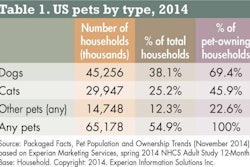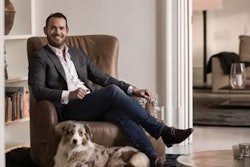Part one of a series: Petfood communication revisited
At Feed Your Pet Inc. (FYP) headquarters, Joe Zweifel (chairman of the board of directors) and Justin Case (marketing director) meet to talk about the progress of the company’s structured product development program.
Joe: I understand you’re making good progress in the product development department. What is the current status?
Justin: We do have a short list of alternative technologies that look to be promising for manufacturing petfood. And we have a list of product ideas that we’re going to turn into kitchen sink samples. And by the way, the person who searched for and assessed novel ingredients has done a great job. We’re now looking at an extensive list of possible ingredients that are hardly or never used in petfood. Purchasing is checking availability, to avoid a situation of incorporating an ingredient in our recipes that is not available as and when.
Joe: Great. You seem to have made quick progress so far. But have you considered what you want to say about the product, and if what you have to say is appealing to which audience? And can that communication lead to a position of psychological leadership? If that is still how you want to go.
Justin: These questions are being considered. And we will come to conclusions before long. More pressing is the question about the brand to be used.
Joe: What’s so difficult about that? We have a basket full of brands that you can choose from. Also the board might have some ideas about this.
Justin: I have no doubt that the board would like to contribute, but using an existing brand is the biggest mistake we could make.
Joe: So, are you suggesting that we add yet another brand to the plethora of brands we already have?
Justin: First of all, I think that we must get rid of a number of the brands that we have now. Some are hardly ever used, and none of these represent a turnover that is worth writing home about. One of my people is already on the ball and has found out that six of our so-called brands represent 3% of our turnover. For me these are not brands, but mere names on a bag. However, I do understand that this is a sensitive subject, because a few of the brands that I want to delete from the list may have been “invented” by a board or family member. Sensitive stuff, so to say.
Joe: I see your point, so why don’t you quickly draw up a list of what you want to delist and what the consequences are for volume, turnover and contribution to fixed. But that doesn’t answer my question about having a new brand. Can’t we just take one of the brands you want to delist?
Justin: These are two questions. The brands that I want to get rid of will have to be re-branded anyway if we should use any of them for the new range. So, I do not see any savings in going with any of the delisted brands. Furthermore, the existing brands that you would use to capitalize on have their image and set of deliverables.
What I have in mind is that the brand to be created must have a modern, slightly avant-garde feel—taking the latest in feeding dogs and cats into account, but also the carbon footprint and possibly some fair trade elements. That’s what we aim to achieve. None of our current brands fit that profile. And taking one of the remaining brands and repositioning it sharply is way too risky, because of credibility and certainly also from a financial point of view. In choosing an existing brand—which must be one of the stronger ones—we would destroy all those years of investing in the brand image and start to spend heavily to create a new image. Economically unsound and difficult to swallow for our trade partners as well. For me, creating a new brand is essential if we want to be serious about psychological leadership.
Joe: You’ve got me on your side. Please make progress along the lines you mentioned and keep me informed.
Justin: The plan is that the brand story is ready in about four weeks. I have decided not to go into making mock-ups yet, because there must first of all be a good understanding and acceptance of what we aim to do, before I start to spend money on creating pack design and such things.
Joe: I absolutely agree with your last point. A friend of mine who owns a creative agency told me only recently that he is sometimes approached by clients and prospects with a brief that the client himself can’t explain when asked to do so. Or even worse, the brief is so superficial and general that the client or prospect doesn’t seem to have a clue about what he wants and where he wishes to go.
Justin: And that is exactly a situation which I want to avoid at all cost. There is no use in developing means of communication—by the way, packaging is a very important one—if we do not know in depth what we want to communicate. After that it’s up to the creative agency to develop the copy and the visuals that can be used in any kind of communication tool. I always say: our brand message must fit a billboard and a matchbox.
Joe: Understood and agreed. When do I receive your brand story?
Justin: Give me five weeks to be on the safe side. I want this to be a solid piece of work and therefore I do not want to cut corners for the sake of meeting an unrealistic deadline.
21st Pet Street, home of Change Stranamics















